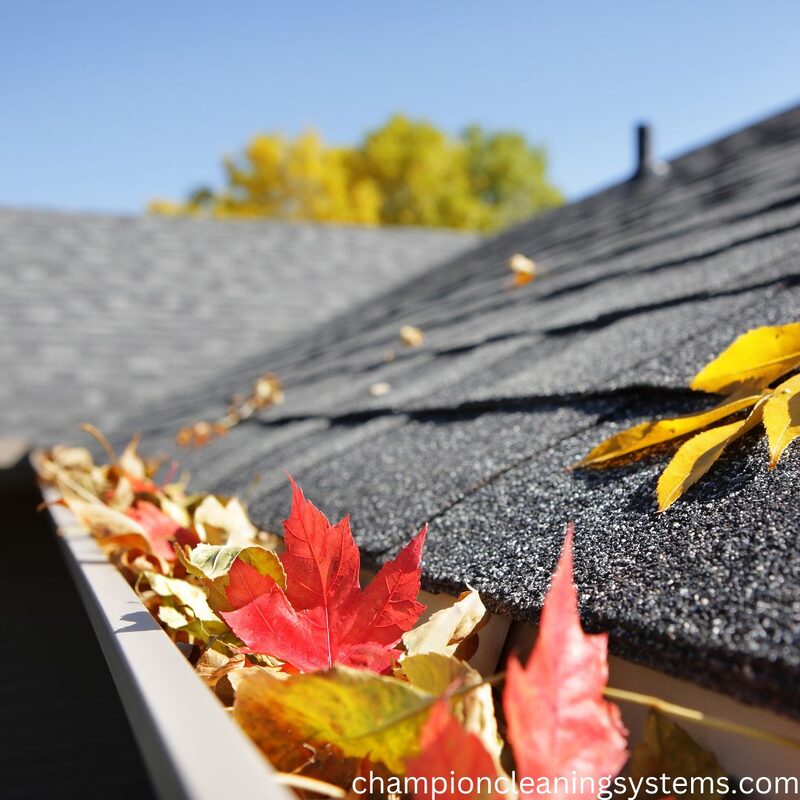As summer fades and autumn approaches, it’s time to prepare your home for the seasonal changes that come with fall. While the colorful leaves and cooler temperatures are beautiful, they can also bring challenges—especially when it comes to water damage. Here are some essential tips to help you safeguard your home and prevent water-related issues this fall.
1. Inspect Your Roof
Your roof is your home’s first line of defense against the elements. As the weather changes, it’s crucial to ensure your roof is in good condition.
- Check for Damage: Look for missing or damaged shingles, cracks, or signs of wear. If you notice any issues, consider having a professional inspect and repair your roof before the heavy rains and winds of fall arrive.
- Clean Gutters and Downspouts: Leaves and debris can quickly clog gutters, leading to overflow and water pooling on your roof. Clean out your gutters regularly and ensure downspouts direct water at least three feet away from your foundation.
2. Seal Windows and Doors
Drafty windows and doors can lead to increased humidity and potential water damage inside your home.
- Inspect Seals: Check the caulking and weather stripping around windows and doors. Look for gaps or deterioration and replace any damaged seals to prevent moisture from seeping in.
- Consider Storm Windows: If you live in an area prone to heavy storms, consider installing storm windows for added protection against the elements.
3. Maintain Your Landscaping
Your yard plays a significant role in how water drains around your home.
- Grade Your Yard: Ensure that your yard slopes away from your foundation. This will help direct water away from your home and reduce the risk of basement flooding.
- Trim Trees and Shrubs: Overhanging branches can damage your roof and create debris that clogs gutters. Regularly trim trees and shrubs to keep them healthy and minimize risks.
4. Prepare Your Plumbing
Fall is a great time to check your plumbing to prevent leaks and other water-related issues.
- Inspect Pipes: Look for any signs of leaks or corrosion, especially in areas prone to freezing. Insulate exposed pipes in unheated spaces to protect them during colder months.
- Clear Outdoor Hoses: Disconnect and drain any outdoor hoses before winter. This will prevent water from freezing in the hoses and causing damage.
5. Check Your Sump Pump
If your home has a sump pump, fall is an excellent time to ensure it’s in good working order.
- Test the Pump: Pour water into the sump pit to check if the pump activates. This simple test can help ensure your pump is ready for heavy rains.
- Clean the Area: Remove any debris or sediment from the sump pit to ensure efficient operation when needed.
6. Review Your Insurance Policy
Fall is a good time to review your home insurance policy and ensure you’re covered for potential water damage.
- Check Coverage: Verify what types of water damage are covered under your policy, such as flooding, roof leaks, or sewer backups. If you live in a flood-prone area, consider additional flood insurance.
- Document Your Home’s Condition: Take photos of your home and any valuable items. This documentation can be helpful if you ever need to file a claim.
7. Create an Emergency Plan
While preparation can significantly reduce risks, it’s also wise to have a plan in place in case water damage does occur.
- Emergency Contacts: Keep a list of reliable contractors, such as plumbers and restoration specialists, on hand for quick access.
- Know Your Shut-Off Valves: Familiarize yourself with the location of your water shut-off valves in case of a plumbing emergency.
Conclusion
As fall approaches, taking proactive steps to prepare your home can help you prevent water damage and the headaches that come with it. By inspecting your roof, maintaining your plumbing, and ensuring proper drainage around your home, you can enjoy the beauty of autumn without the worry of water-related issues. With a little effort now, you’ll be well-prepared to face the seasonal changes ahead. Happy fall!


